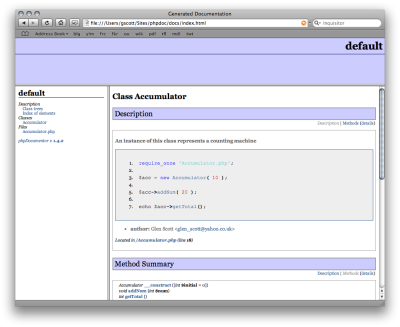The standard Mac install of PHP has always been somewhat quirky, and 10.6 is no exception. One of the most obvious issues occurs when attempting to use date/time functions. PHP 5.3 requires that the date.timezone setting is available. Without this, you will receive a warning similar to the following:
Warning: getdate() [function.getdate]: It is not safe to rely on the system's timezone settings. You are *required* to use the date.timezone setting or the date_default_timezone_set() function. In case you used any of those methods and you are still getting this warning, you most likely misspelled the timezone identifier. We selected 'Europe/London' for 'BST/1.0/DST' instead in /Users/gscott/Sites/hello-world.php on line 9
The solution is to edit (or create, if it doesn’t exist) /private/etc/php.ini and make sure a setting exists for date.timezone. For example:
date.timezone = Europe/London
After making the change, restart Apache
sudo apachectl restart




